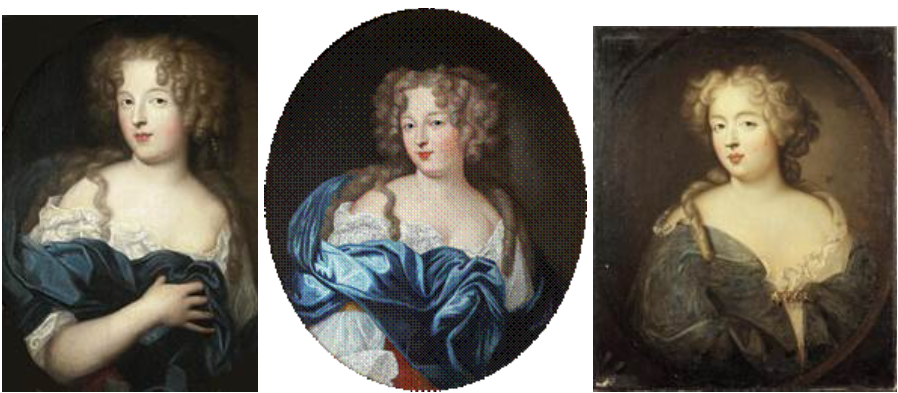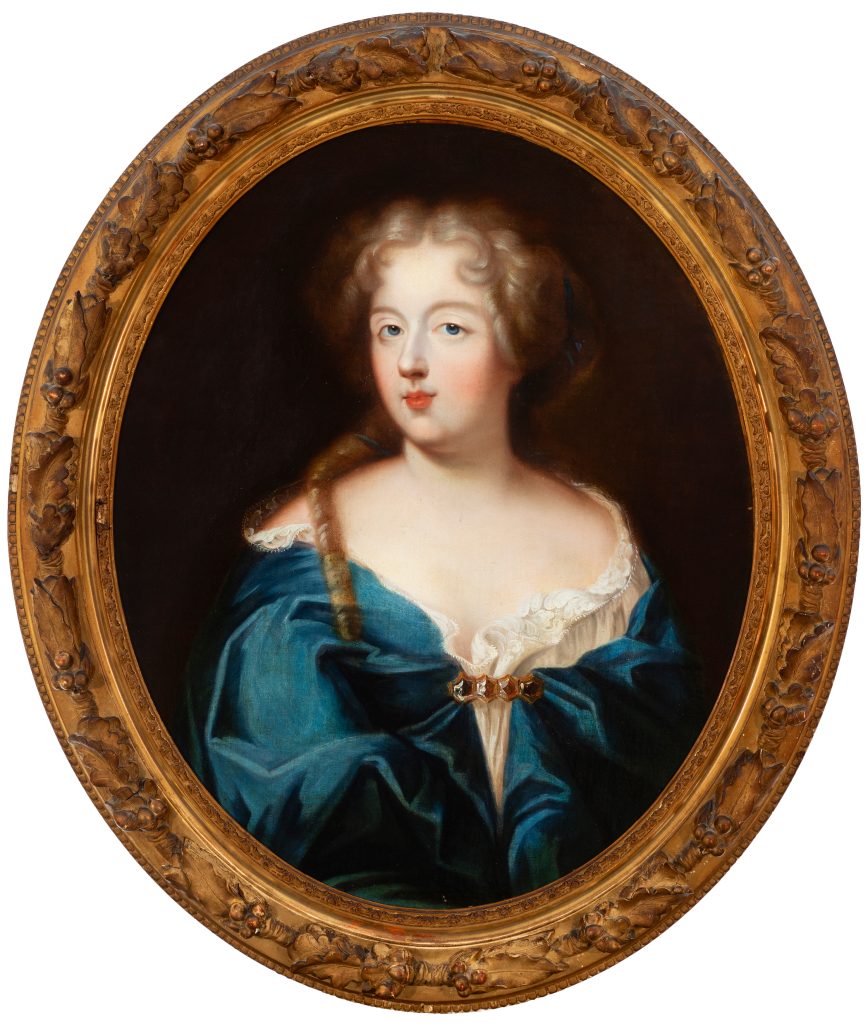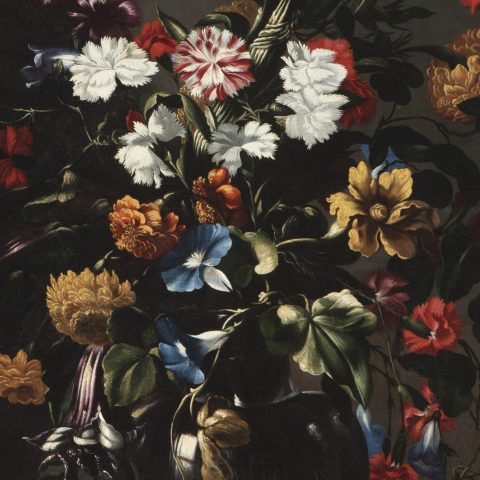Antique portraits not only capture faces from the past: they also teach us to read the history, fashion, social hierarchy and psychology of those who played the leading role in each era. To learn how to look at an antique portrait is to enter a visual universe full of symbolic messages, aesthetic decisions and meaningful elements.
To illustrate this guide, we will analyze one of the most fascinating figures of Louis XIV’s Versailles: the “Portrait of Madame Montespan”, possibly painted by a court painter such as Pierre Mignard.
1. The expression of the gaze
First of all, let’s look at the gaze. In this work, the deep blue of Madame Montespan’s eyes – the same ones that, according to the chronicles, captivated Louis XIV – reveals both power and mischief. Here we see a penetrating but close gaze, a trait that fits perfectly with the marquise’s reputation: a brilliant, witty woman with a charisma that marked an era.
Francoise Rochechouart de Mortemart, better known as Madame de Montespan, was born into a noble family -daughter of the Duke of Mortemart- and arrived at the court of Versailles in 1668. Barely a year later she had already conquered the monarch. She was undoubtedly the most influential mistress of Louis XIV: for ten years she exercised exceptional power, accompanying him in political, cultural and social decisions.
2. Hairstyle and clothing: keys to interpreting an antique portrait.
One of the most revealing aspects of learning how to look at an antique portrait is observing the hairstyle and clothing. In this case, her famous blonde hair falls in ringlets from the nape of her neck to her neckline, a style so admired that it was replicated throughout France as “the Montespan cut”.
Her dress, known as “the innocent”, is a creation of hers: a silk robe inspired by sleepwear, seductive, luxurious and deliberately casual. It also had a practical function: to conceal the pregnancies resulting from her relationship with the king. Seven children were born of this union, officially recognized as Bourbons and destined to occupy key positions in the administration, the army and marriages with the Condé and Orleans branches.
In addition, his anecdotes with jewelers to whom he would return orders because they did not meet his high expectations or the quality of the gems are well known. In an antique portrait, these wardrobe decisions are not casual: they build a controlled, strategic and carefully designed image.

3. Presence and attitude: the construction of an identity

During the decade in which she was the king’s official mistress-a title contested by numerous ladies of Versailles-Madame Montespan exerted extraordinary political, aesthetic, and cultural influence.
As a result, the antique portraits inspired by her are carefully crafted to reflect power, sensuality, and authority.
Painters such as Pierre Gobert depicted her with majesty, conveying a strong and position-conscious character. Even later mistresses of Louis XIV imitated her style and manner of presentation, proof of her enormous impact on court iconography.
In this antique portrait, his posture, gesture and bearing reinforce this dazzling image, as expensive and glorious as Versailles.
An antique portrait as a window to Versailles
The “Portrait of Madame Montespan” is a perfect example to understand how to read an antique portrait: a composition that combines technical refinement, political symbolism and personality. Her beauty and attitude reveal one of the most influential women at the court of Versailles and a key figure in the history of the reign of Louis XIV.
If you are fascinated by antique portraits and their history, we invite you to discover the Old Masters Auction on December 10 at Setdart. Check out the full catalog and find unique works that have survived centuries loaded with meaning and beauty.
If you were interested in this article, you may also like:
- How to hang a work of art to make it look like in a gallery
- Italian influences in the kingdom of France: Fontainebleau Mannerism and Vouet Baroque
Do you have an antique portrait and are thinking of selling it? Our specialists will perform a free and confidential appraisal.








